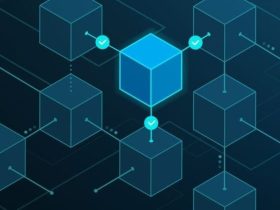The cybersecurity landscape continues to evolve rapidly, shaped by the convergence of artificial intelligence, regulatory changes, and innovative partnerships. This briefing explores the latest developments, from new product launches aimed at democratizing cybersecurity expertise to collaborative efforts in data-centric protection. As AI becomes more integrated into corporate environments, the challenge of safeguarding sensitive information grows, prompting insurers to adapt their coverage and regulators to set new safety standards. In today’s analysis, we delve into the emerging trends that are redefining how businesses approach cybersecurity.
BlackWire Labs Launches BlackWireAI to Democratize Cybersecurity
BlackWire Labs recently announced the launch of BlackWireAI, a product designed to make cybersecurity expertise more accessible to organizations of all sizes. By leveraging AI-driven automation, BlackWireAI aims to simplify threat detection and response, enabling businesses without dedicated cybersecurity teams to benefit from advanced protection. This democratization of cybersecurity is critical in a landscape where cyber threats are becoming increasingly sophisticated and widespread.
The core value proposition of BlackWireAI lies in its ability to deliver robust security without the need for extensive in-house expertise. This is particularly beneficial for small and medium-sized enterprises (SMEs) that often lack the resources to hire specialized security professionals. By automating the analysis of potential threats, BlackWireAI can identify vulnerabilities and respond to incidents in real time, reducing the window of opportunity for cybercriminals.
For the broader cybersecurity industry, the rise of products like BlackWireAI underscores a shift towards automation and accessibility. As cyber threats evolve, the demand for solutions that do not require advanced technical knowledge is growing. This trend highlights a key aspect of the future of cybersecurity—tools that can adapt to the needs of non-specialist users without compromising on the quality of protection.
Source: PRWeb.
ODP and Seclore: Enhancing Data-Centric Cybersecurity Amidst AI Growth in Oman
In response to the increasing integration of AI in various sectors, Oman Data Park (ODP) and Seclore have joined forces to bolster data-centric cybersecurity. Their partnership focuses on enhancing data protection for organizations in Oman, particularly as AI technologies become more prevalent. The collaboration aims to secure sensitive information through advanced encryption and data access controls, ensuring that businesses can innovate with AI without compromising on security.
This initiative is timely, given the growing concerns around data privacy and protection in the age of AI. As companies adopt AI-driven solutions, the volume of data being processed—and the potential for sensitive information to be exposed—increases significantly. ODP and Seclore’s approach centers on protecting data at its source, providing organizations with the tools they need to maintain control over their information even as it moves through various AI-powered systems.
For Oman, this collaboration represents a strategic step towards becoming a regional leader in data security. By focusing on data-centric security, ODP and Seclore are addressing the unique challenges that arise when AI intersects with cybersecurity. This partnership is a blueprint for other markets where digital transformation is outpacing the regulatory frameworks needed to secure data.
Source: The Fast Mode.
AI Safety and Regulation: The Role of Governance in Securing Emerging Technologies
The intersection of AI and cybersecurity has become a focal point for regulatory discussions, particularly in light of recent comments from political figures like Donald Trump. As AI systems are increasingly deployed in critical infrastructure and defense, the need for robust safety protocols has never been more pressing. There is a growing consensus that AI’s potential for misuse—whether through deepfakes, automated cyberattacks, or data breaches—necessitates a new framework for governance.
In his recent address, Trump emphasized the importance of balancing innovation with safety, advocating for regulations that would prevent the weaponization of AI. This stance reflects a broader trend in global governance, where policymakers are grappling with the dual challenge of fostering technological progress while safeguarding against potential risks. The push for AI safety regulation is not just about preventing misuse; it’s also about ensuring that AI systems are resilient against cyber threats themselves.
The challenge for regulators is to craft rules that are flexible enough to accommodate rapid advancements in AI, while also providing clear guidelines for security. For the cybersecurity industry, this evolving regulatory landscape could bring new opportunities and challenges, as companies must adapt their strategies to meet both legal requirements and emerging threats.
Source: Wired.
The Knowledge Gap in AI Usage: 55% of Employees Lack Training on AI Risks
A recent report by Forbes revealed a concerning statistic: 55% of employees using AI at work have no formal training on the associated risks. This knowledge gap poses a significant threat to organizational security, as untrained employees may inadvertently expose sensitive data or misuse AI tools. The report highlights the need for companies to prioritize education and awareness as they integrate AI into their operations.
The lack of training on AI risks is particularly problematic in environments where AI tools are used to automate decision-making processes. Without a proper understanding of how these tools function and the potential security implications, employees may overlook vulnerabilities that could be exploited by cybercriminals. This gap in knowledge extends beyond technical staff to include managers and decision-makers who may not fully grasp the complexities of AI-powered systems.
To address this issue, companies must invest in comprehensive training programs that equip employees with the skills they need to use AI responsibly. This includes understanding the limitations of AI models, recognizing potential security risks, and knowing how to respond to incidents. As AI continues to become a critical component of business operations, closing this knowledge gap is essential for building a resilient cybersecurity posture.
Source: Forbes.
AXA XL Unveils New Cyber Insurance for Gen AI Risks
Recognizing the unique risks posed by generative AI technologies, AXA XL has launched a new cyber insurance product aimed at helping businesses manage these emerging threats. The coverage is designed to address risks such as data breaches, intellectual property infringement, and unauthorized access that are specifically associated with the use of AI-driven systems. This offering comes at a time when businesses are increasingly adopting generative AI for content creation, customer interactions, and other critical functions.
Generative AI poses distinct challenges for cybersecurity because it can be used both to automate attacks and to create realistic fake content. For example, AI-generated deepfakes can be used to impersonate executives or manipulate communications, leading to potential financial losses. AXA XL’s new insurance product is tailored to cover these types of risks, providing businesses with a safety net as they explore the benefits of generative AI.
The introduction of this product also reflects a broader trend in the insurance industry towards adapting coverage to meet the needs of a digital economy. As cyber threats evolve, insurers like AXA XL are finding new ways to support businesses in managing the complexities of AI-related risks. This evolution in cyber insurance is crucial for fostering innovation, as it allows companies to adopt new technologies with greater confidence in their ability to mitigate potential risks.
Source: PRNewswire.
Addressing the Challenges of AI Integration in Cybersecurity
The stories highlighted in today’s roundup illustrate the profound impact of AI on the cybersecurity landscape, bringing both new opportunities and heightened risks. As AI becomes more deeply embedded in business processes, the need for advanced cybersecurity measures is becoming increasingly urgent. Companies like BlackWire Labs and Seclore are stepping up to fill this gap by offering innovative solutions that simplify threat management and data protection.
However, the adoption of AI also requires a greater focus on training and awareness. The findings from Forbes emphasize the critical role of employee education in ensuring that AI is used safely and effectively. As more businesses integrate AI into their operations, the knowledge gap among employees poses a significant vulnerability. Addressing this challenge is essential for building a culture of cybersecurity that can keep pace with technological advancements.
The launch of specialized cyber insurance products like those from AXA XL further underscores the importance of adapting to new types of threats. With generative AI introducing unique risks to the digital landscape, insurers are evolving their offerings to provide businesses with the support they need to navigate this uncharted territory. These developments signal a broader shift towards a more proactive approach to managing cyber risks, where prevention and mitigation go hand in hand.
The Path Forward: Balancing Innovation with Security
As we look to the future, the role of AI in shaping the cybersecurity landscape will only continue to grow. The partnerships, products, and regulatory discussions covered in this briefing highlight the multifaceted nature of this evolution. On one hand, AI offers unprecedented opportunities for automation, efficiency, and innovation. On the other, it introduces new challenges that require a thoughtful and strategic approach to security.
To effectively harness the potential of AI while minimizing its risks, organizations must embrace a holistic approach to cybersecurity. This includes investing in tools that make advanced security accessible, fostering a culture of continuous learning, and adapting to the evolving regulatory landscape. The developments from BlackWire Labs, ODP, and AXA XL provide a roadmap for how businesses can achieve this balance.
At the same time, the role of governments and regulators cannot be overlooked. As AI technologies become more ingrained in critical infrastructure and daily business operations, there is a pressing need for clear and consistent regulatory frameworks. The discussions surrounding AI safety regulation, as highlighted by Wired, serve as a reminder that the actions taken today will shape the trajectory of AI and cybersecurity for years to come.
In this rapidly changing environment, staying ahead of emerging threats requires a commitment to innovation and vigilance. By building strong partnerships, investing in education, and adapting to new risks, businesses can navigate the complexities of AI-driven cybersecurity and ensure a safer digital future.

















Got a Questions?
Find us on Socials or Contact us and we’ll get back to you as soon as possible.